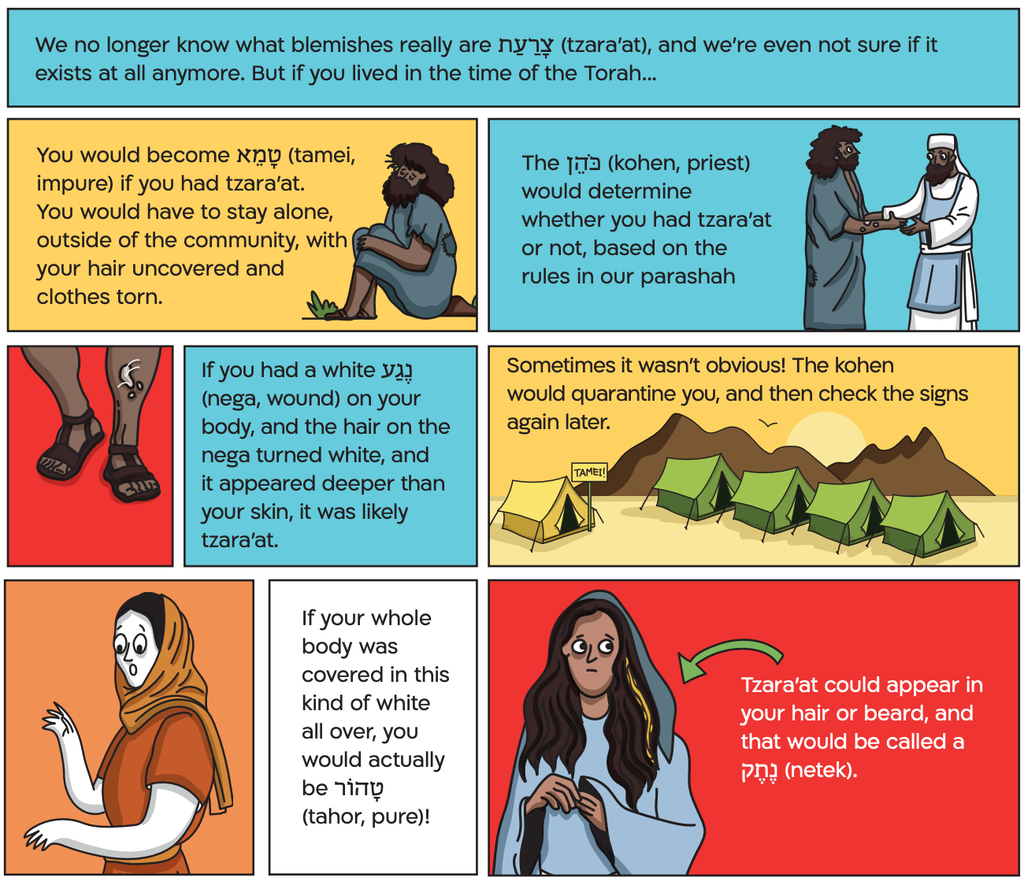Ilustration Credit: Elad Lifshitz, Dov Abramson Studio

In This Week’s Parashah: מָה בַּפָּרָשָׁה
Full Parashah Reading: Vayikra 12:1-13:59
- We no longer know what blemishes really are צָרַעַת (tzara’at), and we're even not sure if it exists at all anymore. But if you lived in the time of the Torah...
- You would become טָמֵא (tamei, impure) if you had tzara’at. You would have to stay alone, outside of the community, with your hair uncovered and clothes torn.
- The כֹּהֵן (kohen, priest) would determine whether you had tzara’at or not, based on the rules in our parashah.
- If you had a white נֶגַע (nega, wound) on your body, and the hair on the nega turned white, and it appeared deeper than your skin, it was likely tzara’at.
- Sometimes it wasn’t obvious! The kohen would quarantine you, and then check the signs again later.
- If your whole body was covered in this kind of white all over, you would actually be טָהוֹר (tahor, pure)!
- Tzara’at could appear in your hair or beard, and that would be called a נֶתֶק (netek).
- Your clothing could get tzara’at, too. It would look like red or green staining in the fabric.
- Stay tuned for next week where we learn how you could become tahor again after having a nega.


-------------------






